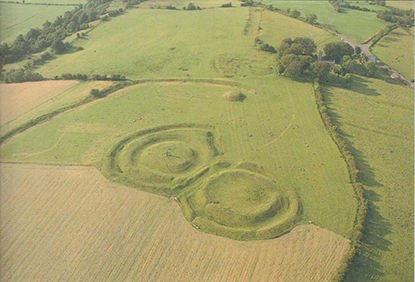The news the other day from the Office of Public Works, that some vandal had scrawled the word ‘fraud’ across the standing stone on the Hill of Tara was dismaying.
There is a programme underway to increase the visitor interest in the place, which decades ago lost out in popularity to Newgrange and the other Boyne monuments.
The culprit was trying to imply (or so I suppose) that this monument was not the Lia Fáil, or inauguration stone of the ancient High Kings of Ireland, as the publicity information now put about is a fake.
It is certainly an ancient moment of some great age dating I suppose from the centuries just before Christianity in Ireland, or even earlier.
Such stupid and petty vandalism is always to be decried, though in the case of the standing stone at Tara the case is complicated.
The stone is certainly not the Lia Fáil, the ancient inauguration stone of the High Kings of Ireland. The hill itself is of far greater, antiquity, predating the arrival of the ‘the Celts’ in the 400s BC. Its ritual associations can really only be guessed at. All the other surviving and suggested inauguration stones in Ireland are blocks that can be sat or stood upon. They are not pillar stones.
Let me explain what I think. The stone originally lay at the foot of the Hill of the Hostages. (All the names at Tara are derived from ancient sources, but they are applied by different scholars over the past two hundred years, to different sites.
There it lay prone. From that site, in the mid-Nineteenth Century it was moved by local people some yards across to the height of the Rath-na-Riogh, the central site, where it was erected standing upright.
The claim that it is was the inauguration stone of the High Kings was made by archaeologists of the Petrie era because there seemed to be no other stone on the site that fill the role.
John O’Donovan, however, when he was conducting his place name survey for the Ordance Survey in the 1830s, a task to which he devoted immense amounts of time, thought and scholarship, with his reports being composed in his lodgings as he travelled from place to place. He was of the opinion, which he felt well founded, that the Lia Fáil (if it still existed in Ireland) was quite another stone that lay in the Church of Ireland graveyard surrounding the little church which is now the visitor centre.
So a well-founded argument based on archaeological authority can be made that the standing stone is not indeed the Lia Fáil.
But those who re-erected it did not claim it to be. They intended it to be a monument to the rebels of 1798 who died there in the bloody Battle of Tara during the Rebellion of that year.
So though it is not the Lia Fáil it is still an ancient stone, and a national memorial to Ireland’s revolutionary tradition.
What the Lia Fáil really was, and what became of it, and the role Irish lore and legend play in the tale, is a large matter which I will address in an extended article in May at the time when our neighbours crown Charles III as their monarch.


 Peter Costello
Peter Costello The Hill of Tara
The Hill of Tara 